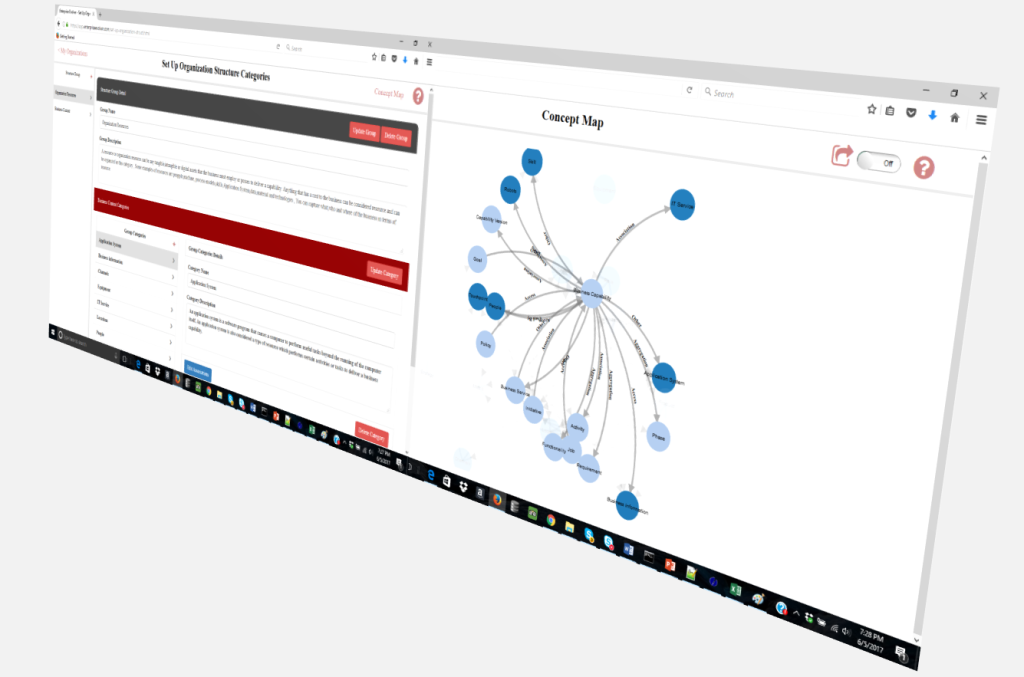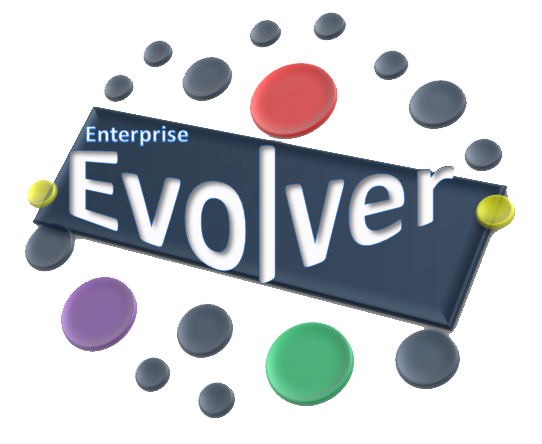
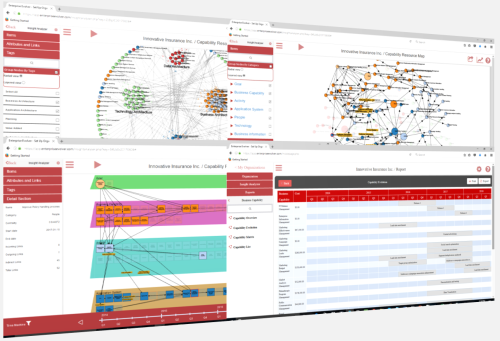

Get a comprehensive view of your organization structure, business parts, business capabilities, application systems and customer journeys. See how everything fits together to deliver value and generate revenue. Enterprise Evolver makes it easy to capture the big picture to manage change in your business. Continuously develop enterprise architectures to manage continuous change in business parts and structure. You get insights on core capabilities that drive transformation initiatives –all in one single platform.

Define what an organization must be able to do to successfully execute its strategy using capability-based planning. Create capability roadmap and understand how business capabilities will evolve to support a business transformation. Understand the actual cost of delivering a capability by sharing resources across many capabilities. Evolver makes it easy to map capabilities with resources (e.g. people, process, technology) and relate all aspects of operations logically.
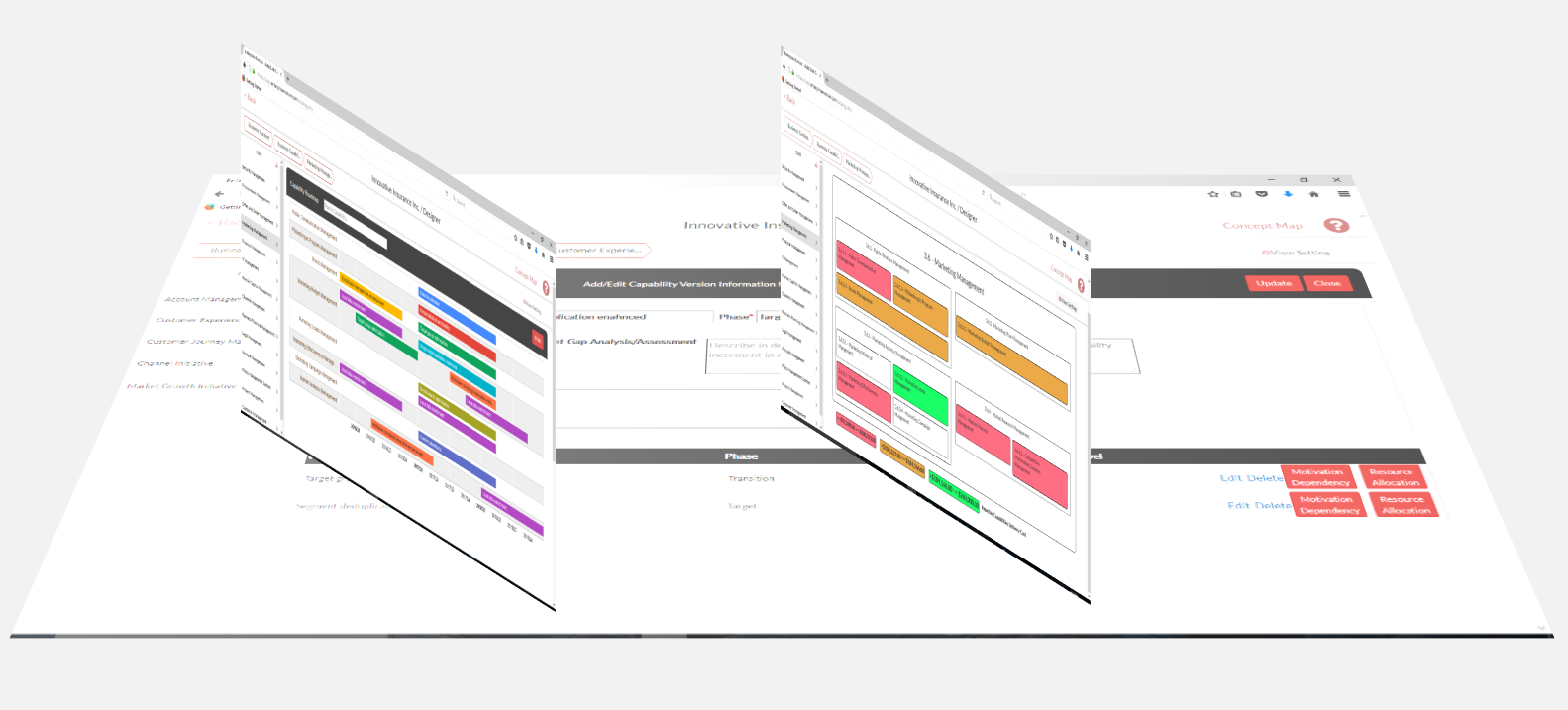
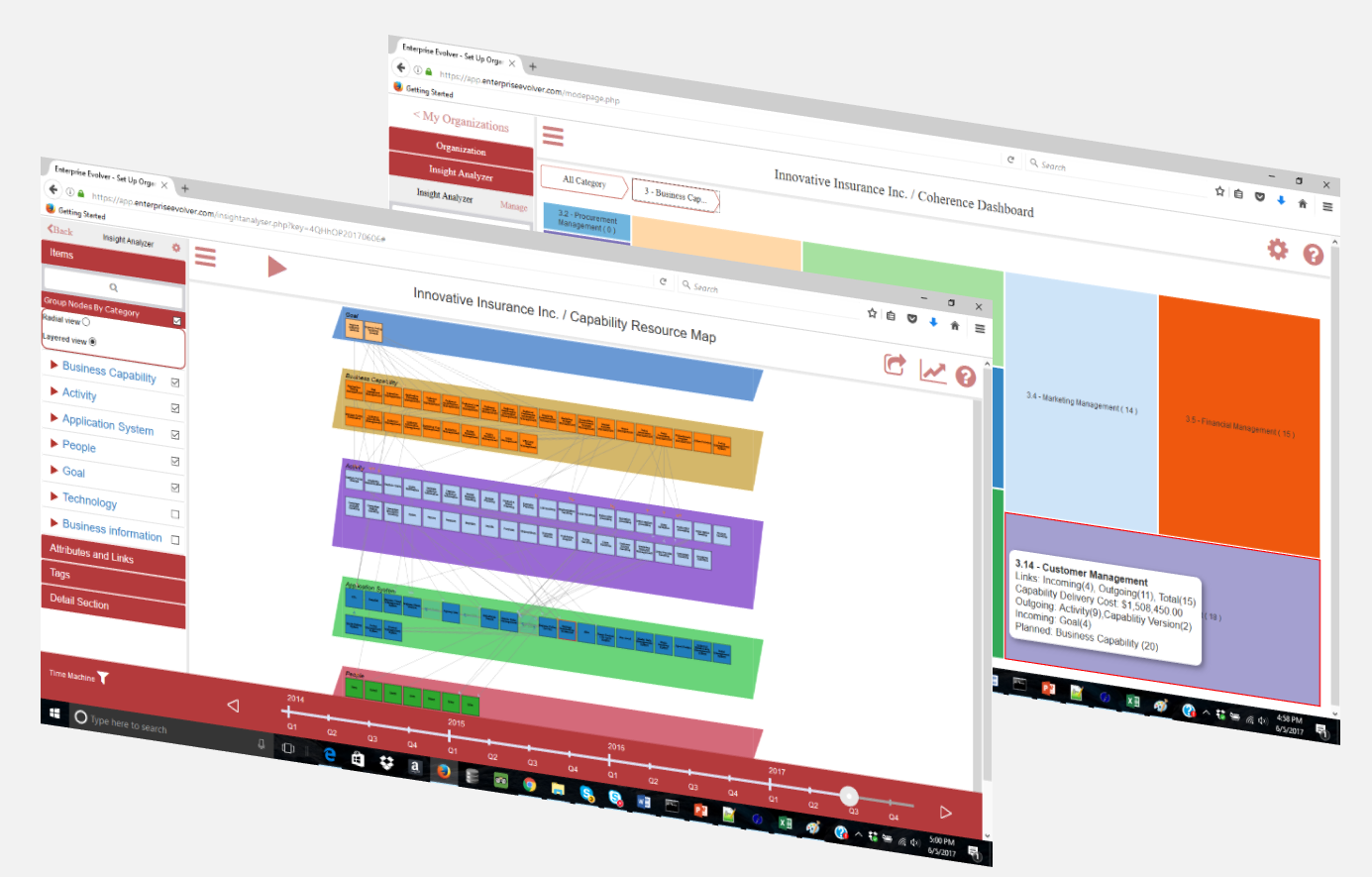

Generate data-driven interactive and highly personalized blueprints and maps to satisfy stakeholder’s unique need and concerns. Show each stakeholder what’s relevant by creating different visualizations of the same data. Create the big picture to provide the common understanding of the enterprise so that stakeholders can understand how various business parts are related and fit together. Drive alignment between business and IT and build long-term relationships with your stakeholders.

Visualize and analyze complex relationship data dynamically through interactive graph database. Improve organization design, remove duplicates, understand dependencies, impacts and build coherent enterprises. Visualize the evolution of your enterprise with the Enterprise Evolver’s time machine feature. Apply system thinking to understand the complex relationship and interactions between parts and manage change.
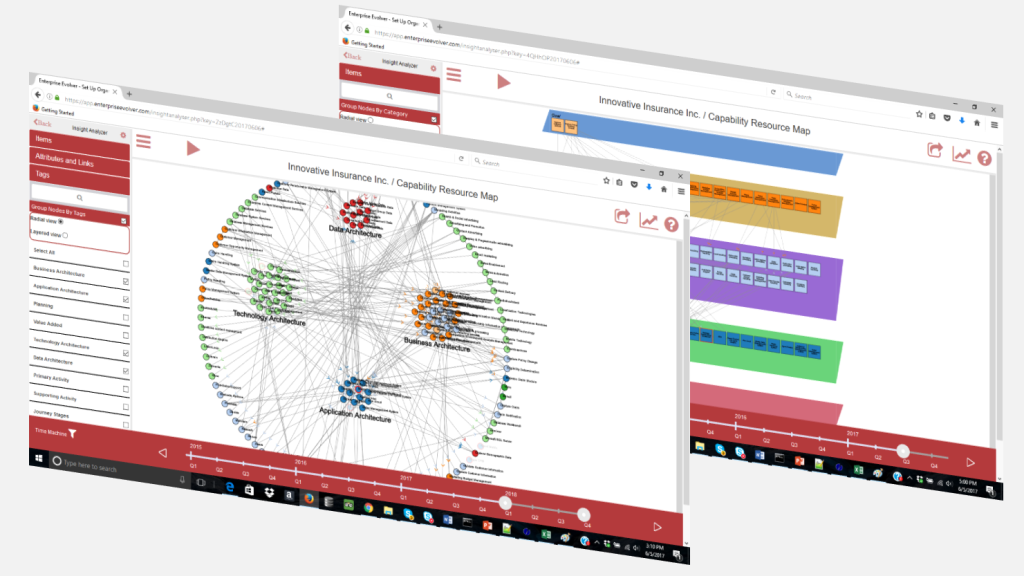
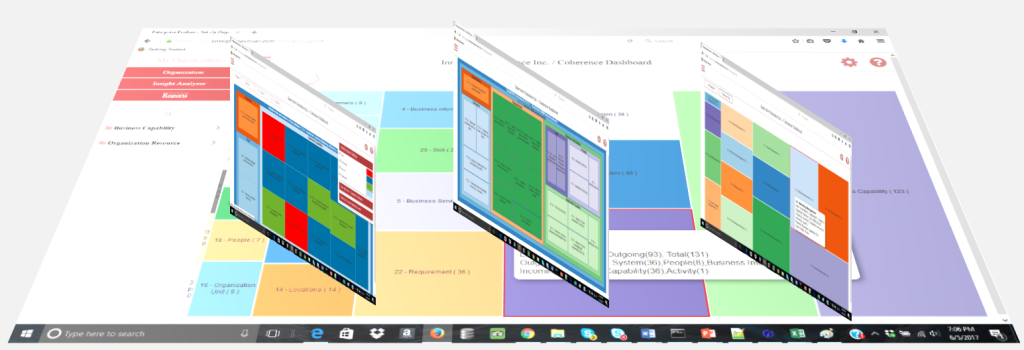

Visualize hierarchical, relationship data and capability planning data from one single coherence dashboard and understand how everything coherently fits together. Perform what-if analysis, understand the cost of developing capabilities, analyze dependencies & impacts and more.
.
Capture various organization structural elements (aka business parts) such as strategy, goals, capabilities, resources, data, people, application systems, and their relationships. Visualize the meta model through an interactive graphical interface
